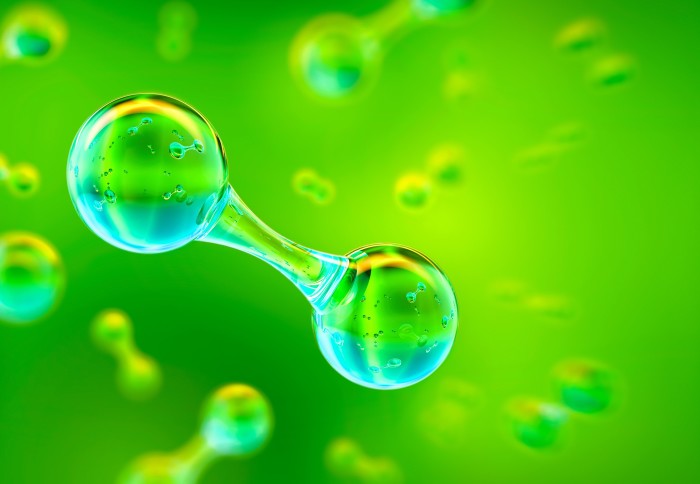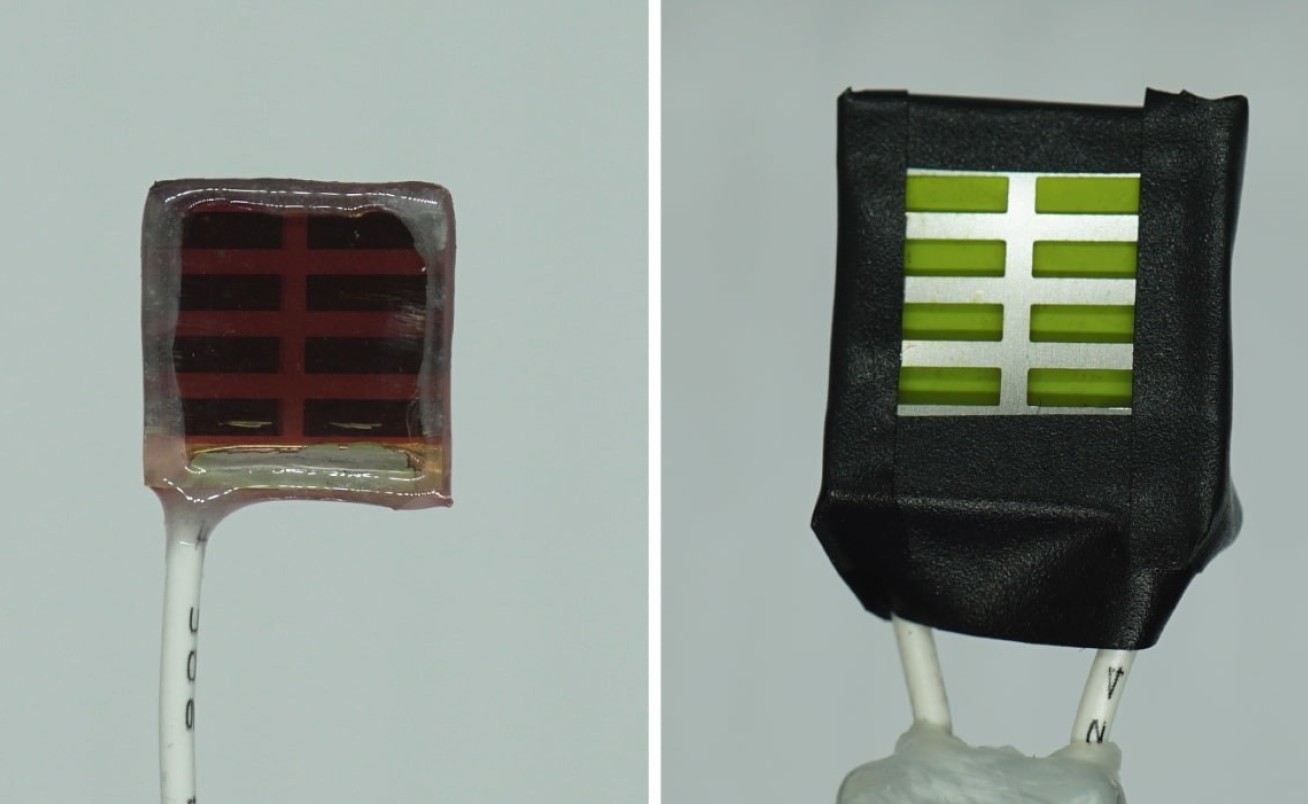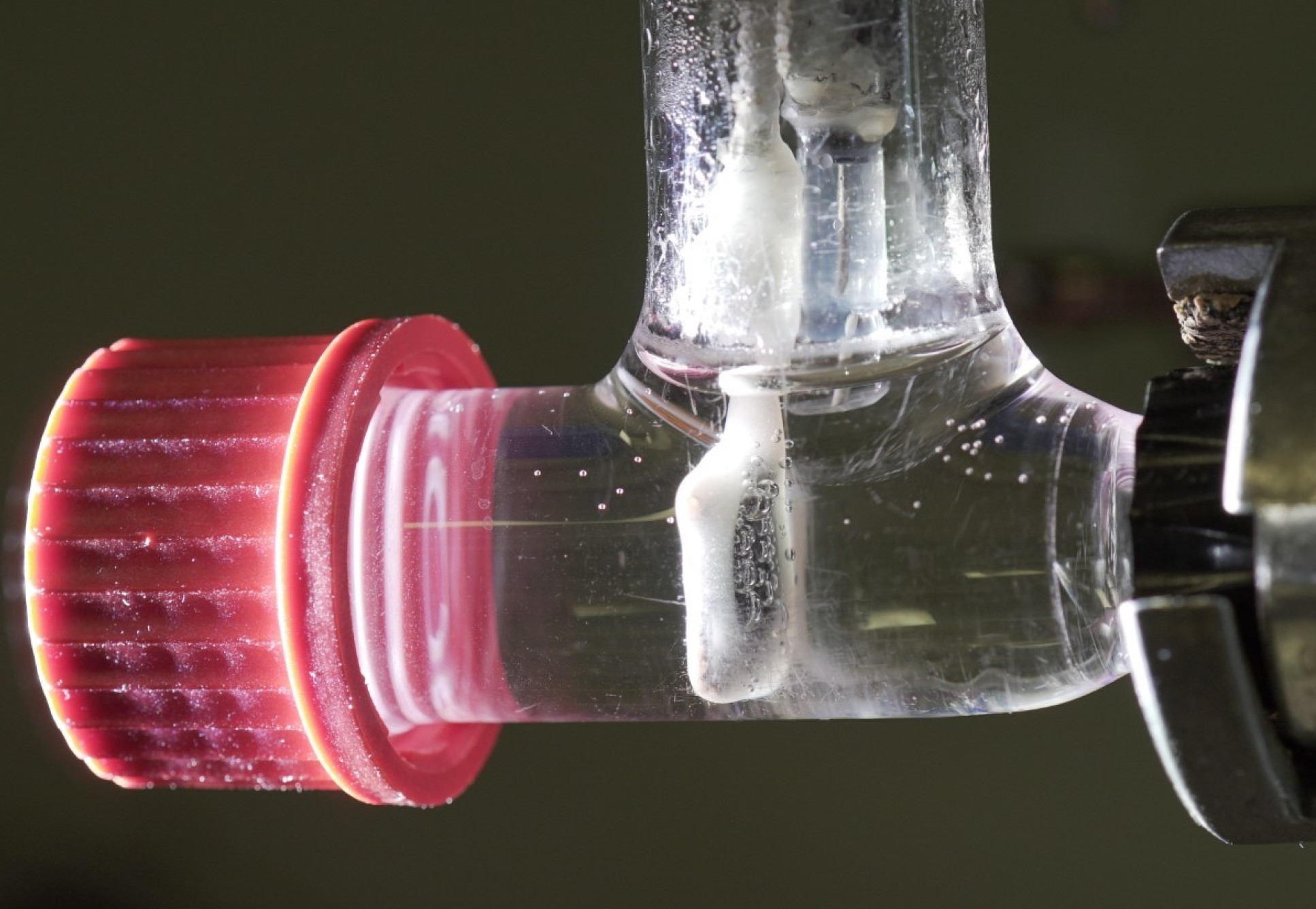

New findings have shown that devices made of readily available oxide and carbon-based materials can produce clean hydrogen from water over weeks.
The findings from Imperial College London and the University of Cambridge could help overcome one of the key issues in solar fuel production, where current earth-abundant light-absorbing materials are limited through either their performance or stability.
Underexplored materials for light harvesting
Hydrogen fuel will play a critical role in the transition to full decarbonisation and reaching the UK’s goal of net-zero emissions by 2050. With most hydrogen currently supplied from fossil fuels, researchers are now working to find ways to generate hydrogen more sustainably. One way to achieve this is to make devices that can harvest sunlight and split water to produce green hydrogen.
Bismuth oxyiodide is a fascinating photoactive material that is stable and has energy levels at the right positions for water splitting. We wanted to see if we can translate that stability to green hydrogen production. Dr Robert Hoye Imperial College London
While many light-absorbing materials have been tested for green hydrogen production, most degrade quickly when submerged in water. For example, perovskites are the fastest-growing materials in terms of light-harvesting efficiency, but are unstable in water and contain lead. This presents a risk of leakage; therefore, researchers have been working to develop lead-free alternatives.
Bismuth oxyiodide (BiOI) is a non-toxic semiconductor alternative which has been overlooked for solar fuel applications due to its poor stability in water. However, based on previous findings into the potential of BiOI, researchers decided to revisit the promise of this material for the production of green hydrogen.
Dr Robert Hoye, Lecturer in the Department of Materials at Imperial College London explained: "Bismuth oxyiodide is a fascinating photoactive material that has energy levels at the right positions for water splitting. A few years ago, we demonstrated that BiOI solar cells are more stable than those using state-of-the-art perovskite light absorbers. We wanted to see if we can translate that stability to green hydrogen production."
Breakthrough in solar fuel production
The team of researchers from Imperial College London and the University of Cambridge created man-made devices that mimicked the natural photosynthesis process occurring in plant leaves, except they produce fuels like hydrogen instead of sugars. These artificial leaf devices were made from BiOI and other sustainable materials, harvesting sunlight to produce O2, H2 and CO.

Researchers found a way to increase the stability of these artificial leaf devices by inserting BiOI between two oxide layers. The robust oxide-based device structure was further coated with a water-repellent graphite paste, which prevented moisture infiltration. This prolonged the stability of the bismuth oxyiodide light-absorbing pixels from minutes to a couple of months, including the time the devices were left in storage.
This is a significant finding that transforms BiOI into a viable light harvester for stable green hydrogen production.
"These oxide layers improve the ability to produce hydrogen compared to stand-alone BiOI", said Dr Robert Jagt, Department of Materials Science and Metallurgy, University of Cambridge, one of the co-lead authors.
Researchers further found that artificial leaf devices comprising of multiple light-harvesting areas (called ‘pixels’) demonstrated a higher performance over conventional devices with a single larger pixel of same total size. This finding could make the scale-up of novel light harvesters much easier and faster for sustainable fuel production.
Even if some pixels are faulty, we were able to disconnect them, so they don’t affect the rest. This meant we could sustain the performance of the small pixels on a larger area. Dr Virgil Andrei University of Cambridge
Dr Virgil Andrei, a co-lead author from the Department of Chemistry in Cambridge, explains: "Even if some pixels are faulty, we were able to disconnect them, so they don’t affect the rest. This meant we could sustain the performance of the small pixels on a larger area."
This increased performance enabled the device to not only produce hydrogen but also reduce CO2 to synthesis gas, an important intermediate in the industrial synthesis of chemicals and pharmaceuticals.

Looking to the future
The findings demonstrate the potential for these new devices to challenge the performance of existing light absorbers. The new ways of making BiOI artificial leaf devices more stable can now be translated to other novel systems, helping to bring them towards commercialisation.
The full article is available to read in Nature Materials.
This work was in part supported by the Cambridge Trust, the Winton Programme for the Physics of Sustainability, the Royal Academy of Engineering, the Engineering and Physical Sciences Research Council (EPSRC), and the European Research Council. Robert Hoye is a Royal Academy of Engineering Research Fellow and Virgil Andrei is a Fellow of St John’s College, Cambridge.
Reference: Virgil Andrei, Robert A. Jagt et al. ‘Long-term solar water and CO2 splitting with photoelectrochemical BiOI–BiVO4 tandems’ Nature Materials (2022). DOI: 10.1038/s41563-022-01262-w
Article text (excluding photos or graphics) © Imperial College London.
Photos and graphics subject to third party copyright used with permission or © Imperial College London.
Reporters

Kayleigh Brewer
Department of Materials
Dr Robert Hoye, FIMMM CEng CSci
Department of Materials

Contact details
Tel: +44 (0)20 7594 6048
Email: r.hoye@imperial.ac.uk
Show all stories by this author




Leave a comment
Your comment may be published, displaying your name as you provide it, unless you request otherwise. Your contact details will never be published.